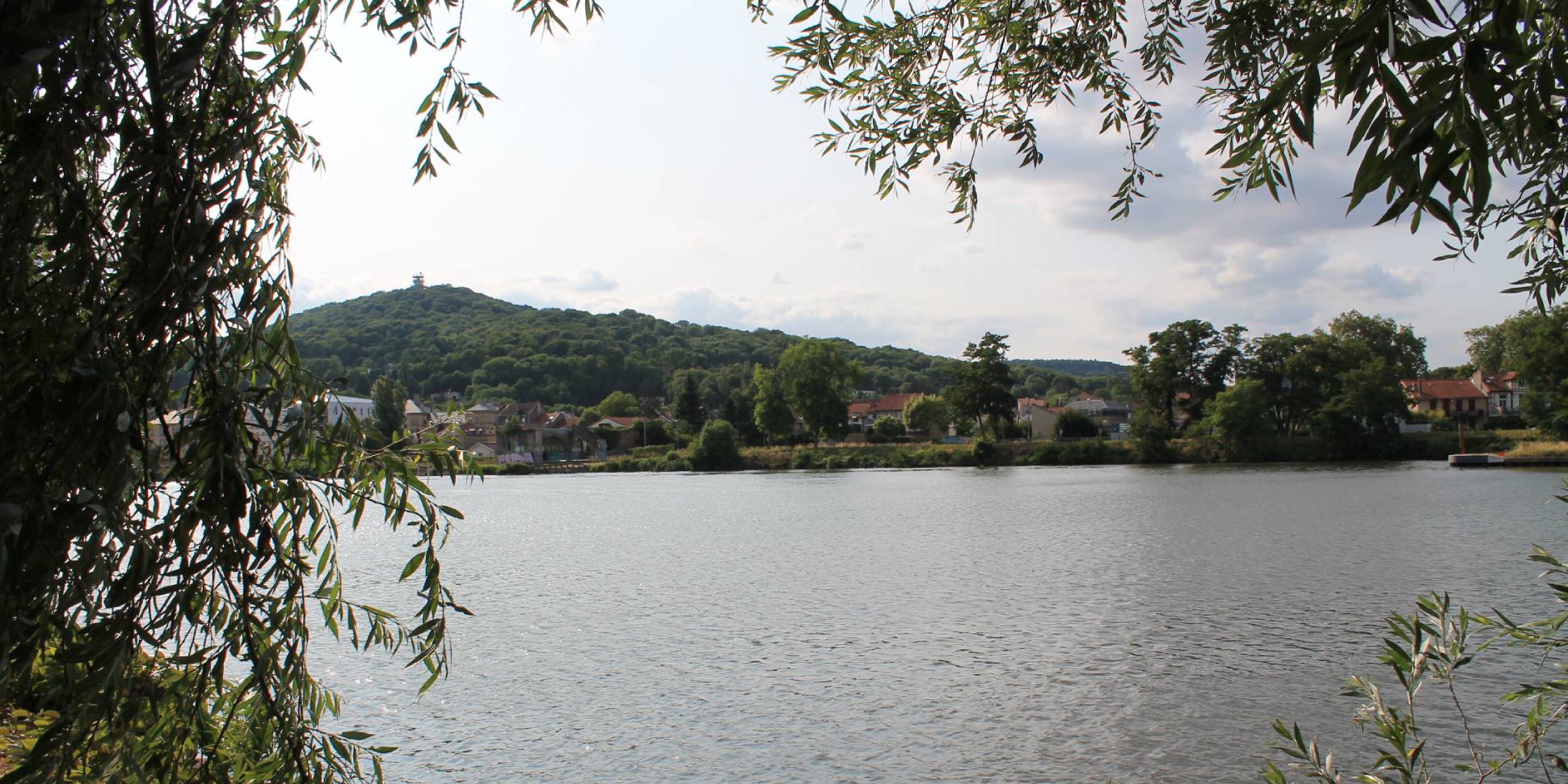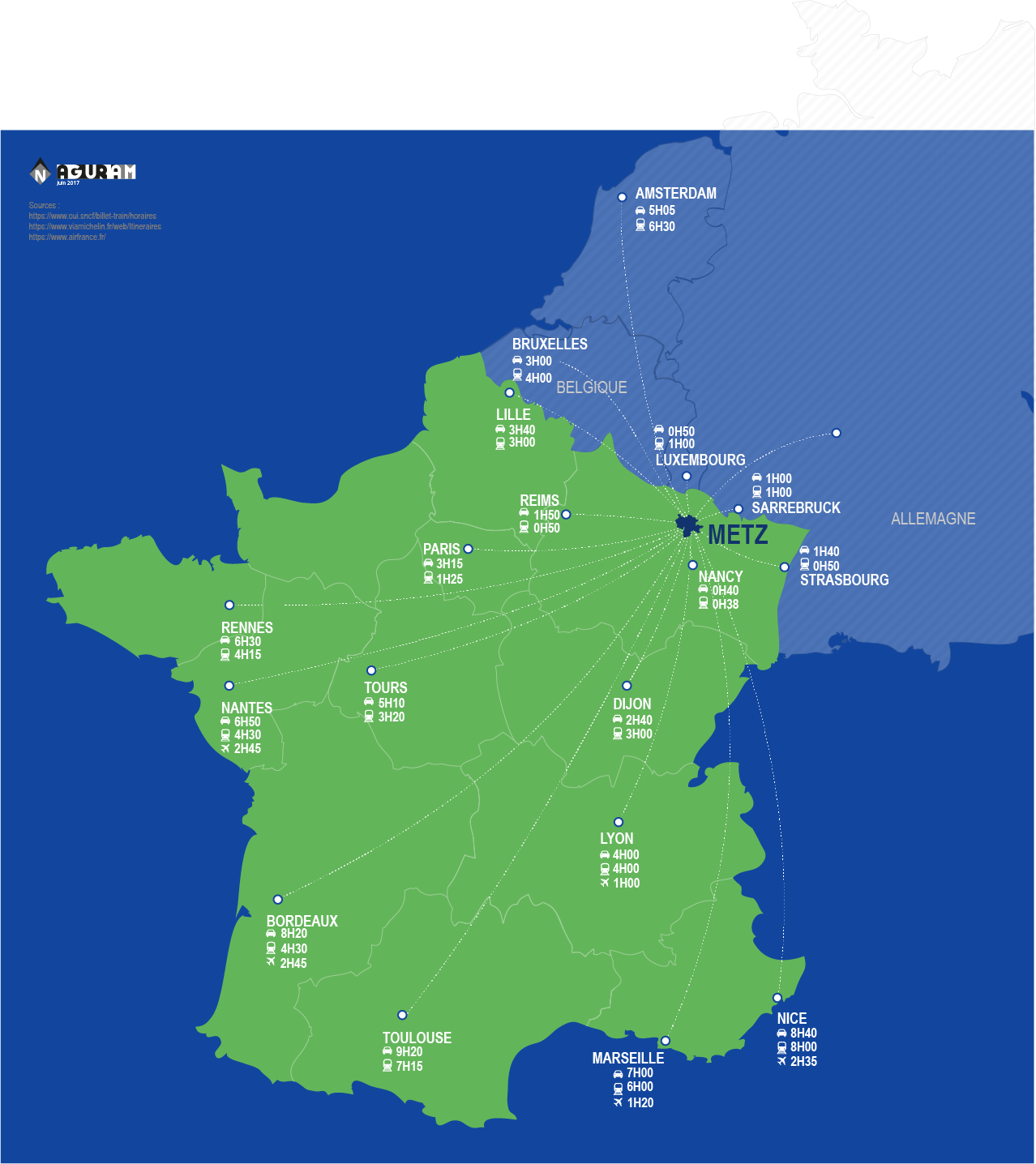Originally, the village was only made up of one or two farms dedicated to growing vines that were planted on the hillside of Mont Saint-Quentin by Roman legions.
Longeville is made from two parts that are separated by the Moselle river, and was progressively urbanised after the defeat in 1870. The village, dating back to the Gallo-Roman era, is located to the west, along the side of Saint-Quentin. While île Saint-Symphorien stretches out to the east, with the Parc du Grand Patural, the lake equipped with a water sports centre, and the Moselle oxbow lake.
Discover our heritage
Sites and monuments
- Le donjon des Gournay (les Gournay keep), one of the oldest buildings in Longeville-lès-Metz
- Saint-Quentin church, in the French neo-Gothic style, built in 1867
- Saint-Symphorien church
- The Protestant church
- Boulevard Saint-Symphorien, planted with magnificent Ginkgo Biloba trees
Walks and green spaces
- Nature walk: “Le tour du Mont Saint-Quentin (Mont Saint-Quentin tower)”: Mont Saint-Quentin with a stunning view of Longeville-lès-Metz, Metz and the Moselle valley. Download the nature walks map and the “Les secrets du Mont Saint-Quentin (The secrets of Mont Saint-Quentin)” route
- The Parc du Grand Patural, former racecourse on the banks of the Moselle, with its arboretum and walkways.


